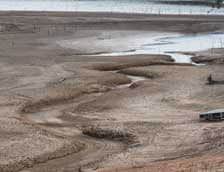

401 et seq.).Ĭlick here to read more about the the USACE regulatory permit process and find contact information on how to request a jurisdictional verification. 1344) or a written determination that a waterbody is subject to regulatory jurisdiction under Section 9 or 10 of the Rivers and Harbors Act of 1899 (33 U.S.C. Ephemeral stream network extraction from lidar-derived elevation and topographic attributes in urban and forested landscapes JUnder-representations of headwater channels in digital stream networks can result in uncertainty in the magnitude of headwater habitat loss, stream burial, and watershed function. Jurisdictional Determination Definition A written USACE determination that a wetland and/or waterbody is subject to regulatory jurisdiction under Section 404 of the Clean Water Act (33 U.S.C. These jurisdictional determinations are made on a case-by-case basis by the USACE. These streams may be jurisdictional if they are flowing directly or even indirectly into what USACE determines to be a traditionally navigable waterway. Any wetlands associated with these systems may or may not be jurisdictional. However, it can be difficult to determine if this is the case for each stream. Intermittent streams may dry up for some period of. Not all intermittent, ephemeral, and headwaters are regulated by the US Army Corps of Engineers (USACE). Intermittent rivers and Ephemeral Streams (IRES) are river water bodies characterised by temporary flow. In Arizona, approximately 95 of total stream miles are ephemeral.1 Other Arizona waters. streams that flow at different times of the year or seasonally when there is enough water from either rainfall, springs, or other surface sources such as melting. Seasonal Stream Jurisdiction Under the Clean Water Act Ephemeral streams flow during and after precipitation events. streams that regularly exist for short periods of time, usually during a rainy period and may have defined channels even when they are dry. According to the EPA, 53% of total stream miles in the continental US are headwaters.

Headwaters (also called headwater streams) are the upper reaches of a non-tidal stream where the average annual flow of the stream is less than 5 cubic feet per second. These streambeds are above the water table throughout the year and receive no groundwater flow. Flowing water may occur only during rain events, and may be short in duration. In ephemeral streams, surface runoff from precipitation is the primary source of stream flow. Runoff from rainfall supplements the stream flow, but intermittent streams may dry up part of the year. Intermittent streams are those where groundwater provides stream flow for part of the year. Wetlands are often associated with these stream systems. The main distinction between a perennial and an ephemeral stream is that the former is a permanent fixture in the earth’s make-up, and the latter only serves its purpose for a short period of time. They serve many of the same ecological roles as larger downstream sections. An ephemeral stream is a body of water that flows for only a short period of time before drying up and forgetting its past life of ever being a stream. These are called intermittent streams and ephemeral streams, and are very important to the health of the downstream waters. While these wetlands are not directly connected to rivers, lakes and other surface waters, they too play an important role in the health of water networks, sequestering water from rain fall and filtering out contaminants as water is released into the groundwater table.© Steven Upperman Types of Seasonal StreamsĪlmost 60% of streams in the US only flow seasonally or after storm events 1. Like ephemeral streams, non-adjacent wetlands serve an equally important function. When it does rain, ephemeral streams carry this soil downstream which gets deposited along the riverbank, replenishing the area with sediment.Īdditionally, when there is an abundance of rain, ephemeral streams carry enough waters to have some of it absorbed by the ground, replenishing their groundwater tables. This paper quantifies thresholds in ephemeral streams and evaluates how they are affected by rainfall and watershed properties. During dry spells, dried up stream beds build up layers of nutrient-rich soil. This rule will have major impacts to water quality because of the importance of ephemeral waters and non-adjacent wetlands.īut you might be asking: what exactly are these waterbodies, and why are they so important?Įphemeral streams are dry stream beds that flow as rivers or streams after periods of rainfall. the generalized interrelation of stream order and hydraulic variables. What environmental groups are calling the “Dirty Water Rule” eliminates a number of federal protections for ephemeral waters, such as small streams, as well as wetlands not directly adjacent to other waterbodies. depth, velocity, and suspended sediment load of ephemeral streams near Santa Fe. In February, the US Environmental Protection Agency released its replacement to the Obama-era Waters of the US Rule.


 0 kommentar(er)
0 kommentar(er)
